All posts by Hayley Schneider
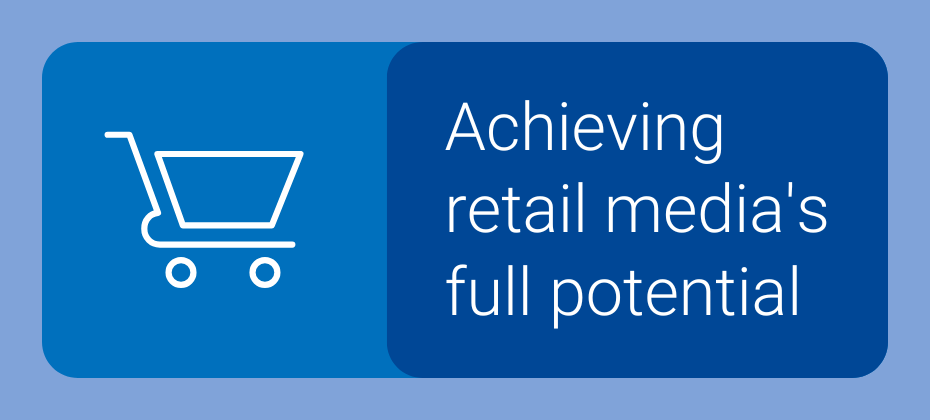
Originally appeared on Total Retail Retail media networks (RMNs) continue to demonstrate how they can be a powerful monetization driver for retailers, creating a win-win-win for everyone involved. Retailers can monetize their valuable first-party data as well as their online and in-store inventory, while customers benefit from timely, relevant content that enhances their shopping experience. At the same time, advertisers can reach highly targeted audiences at critical moments near the point of purchase Achieving this type of success requires overcoming challenges around fragmented and incomplete first-party data, which can limit a retailer's ability to organize and use their data effectively. Additionally, many RMNs lack the analytical capacity to generate customer insights, build addressable audiences, and accurately measure success. To realize the full potential of their platforms, RMNs need partners that provide complementary data, strong identity solutions, and the expertise to transform insights into actionable strategies. This allows RMNs to drive winning outcomes for themselves, marketers, and their customers. Here are the five steps an RMN should consider when selecting the right partner. 1. Build an identity foundation First, the right partner needs to be able to organize and clean customer data. Given the millions of customer records and data points that a retailer has, RMNs need to make sure their data is highly usable. Whether it is a known customer record or an unknown customer with incomplete data, partners should fill in missing information and connect fragmented customer records to a single profile. For example, RMNs need to know that a purchase made in-store is by the same customer who bought online. The best partners will then organize those profiles into households since targeting (and purchasing) is often done at the household level. Without a strong identity foundation future steps of segmentation, insights, audience creation, and activation will not be successful. Experian identity Experian's identity solutions provide RMNs with a comprehensive and accurate view of their customers across both offline and digital environments. We clean an RMN's first-party data and organize their customer records into households since targeting is often done at the household level and purchases are made at the household level. Using Experian's Offline and Digital Graphs we work with the RMN to fill in the missing information they have on their customers (e.g. name, address, phone number or digital IDs like hashed emails, mobile ad IDs, CTV IDs, Universal IDs like UID2 or ID5 IDs). This ensures that the retailers' entire customer base can be reached - and measured - across devices and channels. 2. Segment your customers An RMN’s ability to segment its customer base and derive insights depends on the availability and usability of their data assets – not to mention some serious analytical chops. Some RMNs will split their customers into different product segments based on what’s relevant to an advertiser. For example, a home improvement retailer may segment customers by who is buying DIY supplies versus improvement services. Other RMNs may develop custom segments from their customer data and third-party data sources, so that advertisers can personalize their marketing based on life stage, age, income level, geography, and other factors. Either approach is effective but requires working with a partner who has high quality data and deep analytical expertise to develop those segments. Segment with Experian Experian Marketing Data helps an RMN learn about their customer beyond their first-party data. With access to 5,000 marketing attributes, RMNs can fill in the holes in their understanding of a customer. We provide them with demographic, geographic, finance, home purchase, interests and behaviors, lifestyle, auto data and more. RMNs can use this enriched data set to create addressable audience segments. 3. Generate actionable insights about these segments Once the RMN determines how they will segment their customers, they can utilize demographic, attitudinal, interest, and behavioral data from a trusted partner to develop a customer profile that compares its customers against a relevant sample of consumers. Here, the RMN will gain insight that will help them answer questions about its customers. Examples include: What age and income groups are more likely to purchase my product? What is the current life stage of my customers – do they have children, are they married, are they empty-nesters? Is price or quality more important to customers in their decision-making process? What sort of activities do my customers enjoy? How frequently do my customers shop for similar merchandise? What media channels do my customers use to get their information? Expanded insights with Experian With Experian’s advanced customer profiling, RMNs can go beyond basic customer segmentation. We build detailed customer profiles by utilizing accurate, attribute-rich consumer data, so RMNs can gain a more comprehensive understanding of their customer’s preferences, life stages, and purchasing behaviors. Having this insight enables the RMN to: Design a targeted email campaign promoting home essentials to recently married new homeowners. Develop a social media post announcing the opening of a new hardware store to users within a specific location interested in do-it-yourself products. Create brochures and flyers at a local community event tailored towards parents with small children that promote equipment for youth sports leagues. 4. Create high quality lookalike audiences The RMN now knows what distinguishes their customers from other consumers and can create audiences that enable advertisers to run personalized marketing campaigns at scale. RMNs can do this in several different ways: Work with a data provider who can create custom audiences for the RMN (e.g., Ages 40-49 and Leisure Travelers and past purchase of travel item) These custom audiences are created by joining multiple first- and third-party data attributes found to be significant in the customer profile or using machine learning techniques to develop a custom audience unique to the advertiser. Custom audiences with Experian With an enriched understanding of their customers, RMNs can create addressable custom audience segments, including lookalike audiences, for advertisers. 5. Expand addressability of audiences and activate on multiple destinations Once audiences are created, RMNs will want to increase a marketer’s reach across on-site and off-site channels. With the right identity graph partner, an RMN can add digital identifiers to customer records that enable activation across media channels, including programmatic display, connected television (CTV), or social. RMNs should work with identity providers that are not reliant on third-party cookies. They should select partners that offer more stable digital IDs in their graph like mobile ad IDs (MAIDs), hashed emails (HEMs), CTV IDs, and universal IDs like Unified I.D. 2.0 (UID2). Experian powers data-driven advertising through connectivity Using Experian's Digital Graph, RMNs expand the addressability of their audiences by assigning digital identifiers to customer records. Marketers will be able to reach an RMNs customers onsite as well as offsite since Experian provides several addressable IDs. Audiences can be activated across an RMNs owned and operated platform as well as extended programmatically to TV and the open web through Experian's integrations across the ecosystem. Maximize your RMN’s revenue potential with Experian Organizing customer data, segmenting customers, generating insights, creating addressable audiences, and activating campaigns are all critical steps for an RMN to realize that revenue potential. RMNs should select a partner that provides the data, identity, and analytical resources to create the winning formula for marketers, customers, and retailers. Experian’s data and identity solutions are designed to help RMNs maximize their revenue potential. Reach out to our team to discover how we can support your path to RMN success. Connect with us Latest posts
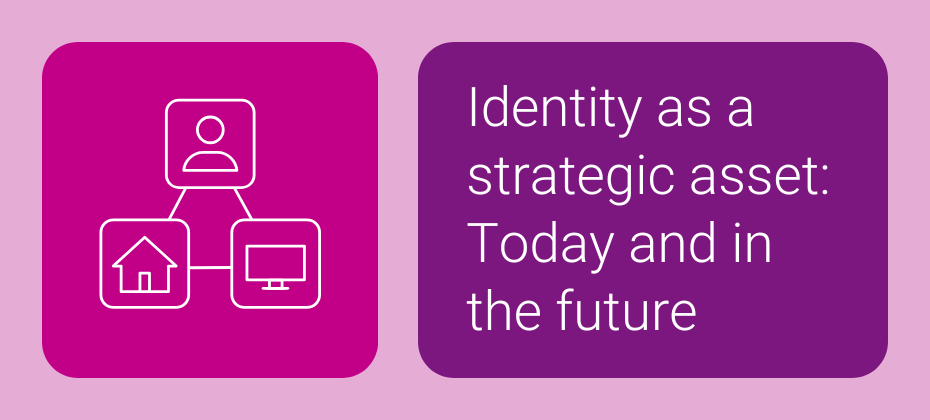
Originally appeared on MediaPost As the digital ecosystem becomes more complex, managing multiple identifiers for consumers has emerged as a significant challenge. From cookies and IP addresses to mobile IDs and universal IDs, marketers and platforms face increasing difficulty in maintaining a unified view of their consumers. Without a coherent identity strategy, campaigns can suffer from poor targeting, limited personalization, and flawed attribution. Experian understands these challenges and offers solutions to help our partners navigate the complexities of a multi-ID landscape. By utilizing both digital and offline data, we provide the tools to unify fragmented identifiers and maintain a persistent view of consumers. As a result, marketers and platforms get rich insights, accurate cross-device targeting, improved addressability, and measurable advertising. The shifting identity landscape For years, the industry has relied on cookies to identify consumers across devices and platforms. However, with ongoing signal loss, including the uncertainty around cookies, and the evolution of privacy regulations, the digital identity landscape has grown more complicated. As consumers hop from one device to another, they are now represented by multiple signals, each tied to a different aspect of their digital behavior. While this shift brings complexity, it also opens the door for innovation. Marketers and ad platforms now have the opportunity to rethink their identity strategies and adopt more flexible approaches that are not reliant on a single identifier. This is where Experian comes in. Connecting the dots: A holistic view of the customer journey Our identity solutions are designed to help manage today’s multi-ID ecosystem by connecting digital and offline identifiers to a single customer profile. This creates a unified view of the consumer, and when combined with our understanding of customer behavior (e.g. demo, interests, shopping patterns) marketers and platforms get both insights about their customers and the addressability to reach them across channels. Four examples of what you can do with a strong identity foundation If an advertiser wants to make its first-party data more addressable, it can utilize our Digital Graph with universal IDs, hashed emails (HEMs), and connected TV (CTV) IDs to extend its reach. A publisher who wants to gain further insights into their audiences and create private marketplaces (PMPs) can achieve this goal with the use of our Digital Graph with hashed emails, universal IDs, mobile ad IDs (MAIDs), CTV IDs, and IPs. The publisher can use this in concert with Marketing Attributes to understand age, gender, household income, buying behavior, and more. The publisher can connect marketing attributes to the Digital Graph via our Living Unit ID (LUID) to understand more about consumers that fall into their segments. A demand-side platform (DSP) who wants to extend first-party and third-party audience reach across all digital devices on their platform will use the Digital Graph with all digital IDs to allow users of their platform to select cross-device extension against first-party and third-party audiences. A retail media network (RMN) can use our Offline and Digital Graphs to connect in-store and online purchases to a household profile—even when purchases are made by different people. The RMN can then reach that household across digital media platforms and accurately attribute the in-store purchase back to digital ad exposure. Identity as a strategic asset: Today and in the future In our paradoxical world where consumers are represented by multiple identifiers, yet marketers and platforms face signal loss, identity is more than a technical issue—it’s a strategic asset. The ability to unify identity data into a single profile provides marketers with the customer intelligence needed to drive growth and stay competitive. Here’s how we do it: Deep, persistent customer understanding: With roots in offline, deterministic data like names, addresses, and emails, we provide an accurate and persistent view of identity to our customers. This allows you to maintain a consistent and comprehensive understanding of your customers and their marketing attributes over time. Highly accurate and refreshed digital identities: Our signal-agnostic graph is not reliant on any one signal as it includes HEMs, cookies, MAIDs, IPs, Universal IDs, and CTV IDs. Our Digital Graph is updated weekly, ensuring the data is always fresh and addressable. This persistent linkage of individuals and households to their identifiers and devices means your campaigns are always targeting the right people. Connected offline and digital graphs for holistic insights: We connect offline and digital identities by following privacy-first best practices, such as preventing re-identification, to allow insights from the offline world to be used in the online world. This integrated approach, enriched with marketing data, gives you better insights, more addressable advertising, and the ability to engage customers across multiple devices while accurately measuring campaign impact. Transform challenges into opportunities The rise of the multi-ID landscape presents both challenges and opportunities for the advertising industry. We stand as the trusted partner to navigate this complexity, utilizing insights from the offline world to inform decisions in the online world, enabling personalized marketing and accurate attribution, and helping you achieve your current and future goals. Get started today Latest posts
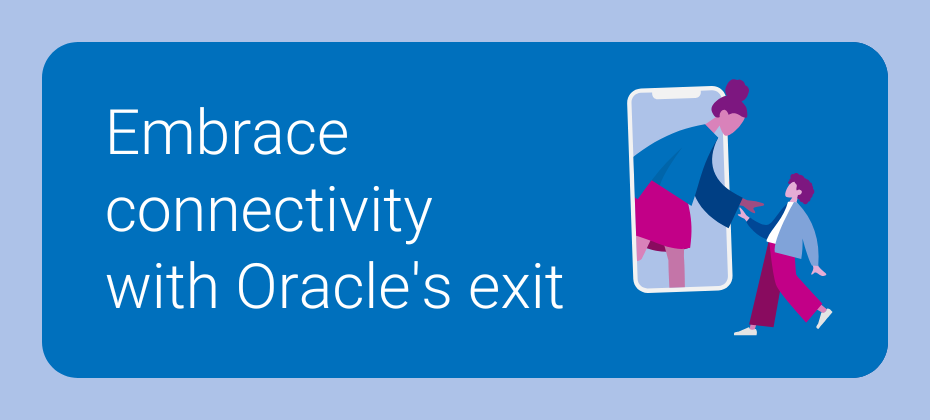
Originally appeared on Adweek The advertising industry is experiencing a significant shift resulting from Oracle's market exit. Over the years, Oracle’s advertising tools—built through key acquisitions like Crosswise, BlueKai, Datalogix, and Grapeshot—have become essential for many marketers, data providers, and platforms. With Oracle’s departure, stakeholders are left searching for reliable alternatives to maintain their data-driven strategies. While this transition may seem daunting, it presents a unique opportunity to reassess audience and identity solutions. With the growing importance of adaptability and interoperability, now is the perfect time for advertisers, agencies, publishers, and platforms to adopt future-focused strategies. Oracle’s legacy: A combination of acquisitions Oracle’s advertising business wasn’t a unified solution but a collection of acquired technologies. Crosswise provided a cross-device identity graph; BlueKai offered a robust data management platform (DMP); Datalogix specialized in offline purchase data; and Grapeshot was known for its contextual targeting. Together, these tools powered a comprehensive offering for advertisers, data providers, and platforms. Yet, much of Oracle’s advertising success stemmed from the external data it used. For example, many of Oracle’s automotive audiences relied heavily on third-party data, largely powered by Experian data. This means that while Oracle may no longer be an option, many of the services marketers depended on through Oracle are still available from Experian, ensuring continuity. What this means for advertisers and agencies For advertisers and agencies, Oracle’s exit means losing access to its syndicated audiences. Fortunately, this doesn’t have to cause a major disruption. As one of Oracle’s primary data providers, we've mapped Oracle’s audiences to our own, ensuring marketers can easily maintain their targeting strategies without losing performance or efficiency. With access to over 2,400 syndicated audiences across key verticals such as demographics, automotive, retail purchases, or financial data, advertisers can continue their campaigns with confidence and precision. What sets us apart? Powered by data ranked #1 in accuracy by Truthset, our audiences are built on reliable, offline, deterministic data — like name, address, phone number, and email. This means advertisers can be confident that they are reaching the right audiences across all channels. With our audiences available across 30+ ad platforms, including programmatic, TV, and social media, advertisers and agencies have easy access to keep their campaigns running. For advertisers that ran audience targeting using Grapeshot's Contextual Platform, our new Contextually-Indexed Audiences are a replacement built for the evolving digital media landscape. By combining the precision of audience targeting with the flexibility of contextual targeting, marketers get a privacy-safe, yet scalable way to target audiences that is not reliant on cookies or other user identifiers. Marketers can activate these audiences through leading demand-side platforms (DSPs) or through Audigent private marketplaces (PMPs). A new opportunity for data providers Oracle’s marketplace has long been a crucial distribution channel for third-party data providers, particularly through BlueKai. With its closure, providers have an opportunity to explore new onboarding services and marketplaces that offer similar or even better reach and effectiveness. New alternative onboarding solutions are emerging, particularly in areas like TV and digital, ensuring that the loss of Oracle’s services does not leave a significant gap. These solutions are being built to overcome the challenges typically present with data onboarding -- complicated integration processes, limited ID matching capabilities, and opaque pricing structures. One such solution is Experian’s new Third-Party Onboarding. What sets us apart? With our digital and offline identity capabilities embedded within this solution, data providers receive superior programmatic and connected TV (CTV) reach and addressability compared to the competition. The first data providers – Adentro, Kontext, L2, and Webbula – are already using this solution to increase the adoption of their audiences and maximize their revenue. Additionally, new marketplaces are emerging that aim to fill the void left by Oracle, offering distribution to key destinations and providing data providers with continued access to advertisers who require high-quality, third-party data. Platforms shift to new audience solutions Platforms that relied on Oracle for third-party data and audience onboarding are now facing challenges in maintaining their ability to target specific audiences. This could affect their inventory's attractiveness to buyers. However, we offer a seamless solution for platforms looking to replace Oracle’s capabilities. As one of Oracle’s primary data providers, we've already mapped Oracle’s audiences to our catalog of over 2,400 syndicated audiences. Platforms can continue providing precise audience targeting and ensure advertisers receive the performance that they demand. Additionally, Third-Party Onboarding builds upon the investment and infrastructure used to distribute our own audience segments, providing platforms with audiences from leading third-party data providers. Moving forward: Embracing connectivity We're dedicated to powering data-driven advertising through connectivity. With best-in-class syndicated audiences, new Contextually-Indexed Audiences, and an easy-to-use Third-Party Onboarding solution, we're enabling advertisers, agencies, data providers, and ad platforms to improve their marketing operations. Oracle’s departure marks the end of one era, but it also opens the door to a future where collaboration, interoperability, and connectivity define the landscape. By choosing partners like us, advertisers, agencies, and platforms can ensure they remain agile, innovative, and well-equipped to thrive in this new era of data-driven marketing. Connect with us Reach out to your account representative or our audience team for information about our comprehensive audience mapping and finding the right audiences for your campaigns. Download our audience lookbook to discover more about Experian’s audiences. Latest posts

Brands are increasingly focused on offering personalized experiences while respecting consumer privacy. Addressability enables them to reach specific audiences with relevant messages, and personalization crafts unique content that aligns with each audience's interests and needs. By combining these strategies, brands can create more relevant and effective marketing campaigns. With new regulations and signal loss reshaping the landscape, alternative identifiers like the ID5 ID and The Trade Desk's Unified I.D. 2.0 (UID2) are gaining importance. These tools give advertisers a more holistic view of consumers across channels, enhancing personalization and addressability even as traditional third-party cookies lose relevance. To shed light on this topic, we interviewed experts from Audigent, Basis Technologies, CvE, ID5, MiQ and others. They shared insights on navigating privacy, utilizing new identifiers, and enhancing personalization with consent. Drawing from their perspectives, we've identified five considerations to help brands adapt and succeed in this evolving landscape. 1. Embrace a privacy-centric approach With the increasing focus on consumer data protection, prioritizing privacy in your addressability efforts is essential. Implement strict data guidelines to protect personally identifiable information (PII) and maintain compliance with state-specific regulations. To achieve this, empower consumers by providing clear and transparent choices about data sharing and honoring their preferences. Avoid targeting based on protected categories or sensitive information. By adopting a privacy-first mindset, you can build consumer trust while still delivering relevant advertising experiences. “It's important to champion consumer privacy and the free internet. We need to strike a balance between the two. This balance is essential for our jobs, the economy, news, politics, and all the valuable content and information we rely on.”Drew Stein, Audigent 2. Personalize with consent Consumers are more willing to share their information when they see clear benefits. In fact, over half of shoppers—and two-thirds of Gen X and Millennials—express a desire to receive holiday shopping deals directly from their preferred brands1. By offering value through loyalty programs, special offers, or interactive platforms, you can personalize experiences without compromising privacy. To implement this strategy, encourage consumers to share their preferences and needs by being transparent and giving them control over their data. This approach builds trust, empowers your audience, and enhances personalization. “Building personalization based on the data consumers have consented to share should lead to a positive experience that drives better engagement because it's relevant to them.” April Weeks, Basis Technologies 3. Personalize with contextual targeting Contextual targeting involves delivering ads based on the content users are currently engaging with rather than user identifiers. By focusing on personalization through contextual targeting and dynamic content, you can align your strategies with your audience's real needs and interests. This approach allows advertisers to reach consumers on websites with more visitors matching the demographics, behaviors, or interests they want to target. “Personalization absolutely can thrive. We have various solutions, all utilizing IDs for targeting and personalization. Beyond that, we can also personalize using context, geo-contextual data, and creative strategies.” Georgiana Haig, MiQ 4. Use alternative identifiers As advertisers move beyond third-party cookies, exploring alternative identifiers offers reliable means to connect with consumers. Options like email addresses or device IDs provide direct connections, improving targeting accuracy. Utilize identity graphs to link different signals and identifiers to establish strong ties to individual users or households. This approach maintains, and can even enhance, your ability to reach the right audience and measure campaign performance. “It's not just about maintaining addressability. It's about massively improving addressability. When we run tests with some of our clients, they're seeing 30, 40, 50, 60% incremental reach by using ID5 versus cookies.” Mathieu Roche, ID5 5. Build partnerships Navigating the complexities of addressability doesn't have to be a solo effort. Partnerships between brands, publishers, and tech providers can lead to innovative solutions that benefit everyone. Consider engaging in data partnerships to access new audience segments without maintaining extensive data. Collaborations focused on your tech stack can enhance your ability to deliver personalized content effectively and at scale. “The rise of second-party data partnerships is going to be an interesting trend over the next couple of years. And if you need mass scale across the world, I think that's a much more cost effective and scalable way to do it.” Paul Frampton, CvE Steering toward success The future of addressability and personalization hinges on your ability to adapt to the changing privacy landscape while delivering meaningful, personalized experiences. By focusing on these five key considerations, you can navigate the complexities of modern advertising, build stronger relationships with consumers, and drive sustainable growth. Connect with our addressability experts Footnote Online survey conducted in June, 2024 among n=1,000 U.S. adults 18+. Sample balanced to look like the general population on key demographics (age, gender, household income, ethnicity, and region). Latest posts

The holiday season is almost here, and knowing how each generation plans to shop can give your holiday advertising campaigns the edge you need. Our recent survey of 1,000 U.S. consumers reveals 2024 holiday shopping trends for each generation and key insights into their anticipated spending levels, preferred shopping categories, and how they look for gift ideas. In this blog post, we'll explore three 2024 holiday shopping trends across generations: Projected consumer spending Top categories on shoppers' lists Preferred channels for researching gifts 1. Projected consumer spending Over 1 in 3 Gen Z and Millennials are gearing up to increase their holiday budgets this year, while Gen X and Boomers are likelier to stick to last year's budget. 36% of Millennials and Gen Z plan to spend more this holiday season 45% of Gen X and 52% of Boomers expect their spending to remain consistent with last year What this means for marketers These insights highlight the importance of tailoring your messaging. For Gen Z and Millennials, emphasize value and unique offerings that justify increased spending. For Gen X and Boomers, focus on trust and reliability, reinforcing their confidence in your brand. How Experian can help you target these audiences Experian’s custom and syndicated audience segments, including Holiday Shopper High Spenders and Holiday Shopper Moderate Spenders, enable you to connect with these diverse consumer groups. Our audiences are available on-the-shelf of leading ad platforms to help you reach people across social, TV, and mobile. The election effect U.S. holiday retail sales saw 4.1% YoY growth in 2016 and 8.3% YoY growth in 2020 following presidential elections. There’s a chance that holiday spending increases after the 2024 election, regardless of the outcome. Experian has 240+ politically relevant audiences that you can activate across major ad platforms ahead of the upcoming election. 2. Top categories on shoppers' lists Different generations have distinct preferences when it comes to what they plan to buy. Gift cards top the list for Gen X and Boomers, while Gen Z leans toward clothing. Millennials are looking to splurge on toys, electronics, and experiences. 69% of Boomers and Gen X plan to purchase gift cards 72% of Gen Z will buy clothing 45% of Millennials will buy health and beauty items 25% of Millennials will buy tickets and 22% of Millennials will buy experiences What this means for marketers Align your product offerings and promotions with each generation's preferences to capture their attention. For example, highlighting versatile gift cards may resonate more with older generations, while showcasing trendy apparel and tech gadgets will appeal to younger consumers. How Experian can help you target these shoppers We offer audience segments like Holiday Shoppers: Apparel, Cosmetics & Beauty Spenders, and Toys Shoppers that you can activate to connect with consumers primed to purchase in these categories. We recently released 19 new holiday shopping audiences we recommend targeting to drive engagement and conversions. Download our audience recommendations here. 3. Preferred channels for researching gift ideas When it comes to finding the perfect gifts, Gen Z turns to social media, while Millennials prefer online reviews and video content. Boomers and Gen X are more inclined to visit physical stores for hands-on product evaluations. 29% of Gen Z and 26% of Millennials will look for gift ideas on social media 44% of Millennials will rely on video reviews and product demos on platforms like YouTube 49% of Gen X and Boomers plan to visit physical stores to evaluate products in person What this means for marketers Understanding where each generation looks for inspiration can guide your content and ad placement strategy. To engage Gen Z, focus on social media campaigns and influencer partnerships. For Millennials, consider investing in video content and reviews. For older generations, ensure your in-store experience is optimized to convert browsing into purchases. How Experian can help you engage these shoppers Our TrueTouchTM audiences can help you pair the perfect messaging styles with the right channels and calls to action. Our Social media channel and content engagement audiences can help you reach Gen Z who are likely to be active users on major social platforms and are Black Friday shoppers. For a full list of Experian’s syndicated audiences and activation destinations, download our syndicated audiences guide. Download our report for five 2024 holiday shopping trends by generation Understanding 2024 holiday shopping trends by generation can help you tailor your targeting, messaging, media planning, and creative based on the generation you’re targeting. In addition to the insights covered here, download our 2024 Holiday spending trends and insights report to learn: When consumers plan to shop (hint: they're already shopping) Where they plan to shop (online vs. in-store) Download our full report to access all five of our predictions by generation, so you can address the diverse needs of this year's holiday shoppers. Download now When you work with Experian for your holiday shopping campaigns, you’re getting: Accurate consumer insights: Better understand your customers’ behavioral and demographic attributes with our #1 ranked data covering the full U.S. population. Signal-agnostic identity solutions: Our deep understanding of people in the offline and digital worlds provides you with a persistent linkage of personally identifiable information (PII) data and digital IDs, ensuring you accurate cross-device targeting, addressability and measurement. Secure connectivity: Bring data and identity to life in a way that meets your needs by securely sharing data between partners, utilizing the integrations we have across the ecosystem, and using our marketing data in flexible ways. Make the most of this holiday shopping season with Experian. Contact us today to get started. Contact us Source Online survey conducted in June, 2024 among n=1,000 U.S. adults 18+. Sample balanced to look like the general population on key demographics (age, gender, household income, ethnicity, and region). Latest posts
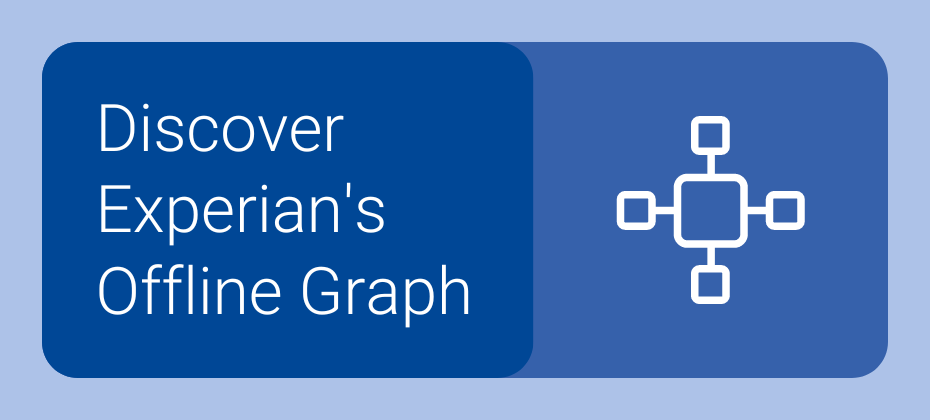
Today, Experian is excited to introduce our Offline Graph as a standalone product that clients can license, marking a significant step in our commitment to powering data-driven advertising through connectivity. Offline Graph empowers advertisers and advertising technology companies to build and refine consumer profiles, contributing to data connectivity, more offline audience reach, and improved offline measurement accuracy. As a result of consumers engaging with content across more channels, there are more disparate data points than ever before. When you couple that with ongoing signal loss, the need for a unified identity solution has never been greater. Experian’s Offline Graph offers companies a license of stable offline data points, like name, address, phone number, email, geographic information, date of birth, and additional attributes that provide a complete view of household and individual identities. The Offline Graph integrates known offline identity information from reliable deterministic sources like property ownership records, public records, and marketing data to provide access to all United States consumers and households. How customers can use the Offline Graph A big box retailer fills in the blanks of their existing customer data and builds a database of prospects. A media platform more effectively onboards advertisers’ segments, enabling advertisers to reach more of their customers. A retail brand better understands their customer’s demographic and behavioral make-up, by licensing Offline Graph with Marketing Attributes. A connected TV (CTV) manufacturer increases audience reach and accurately quantifies the campaign impact for their advertising partners. Experian’s Offline Graph is already driving value across industries. Here’s some in-depth client success stories: Fusion92 licenses Offline Graph to help their clients transform their marketing Fusion92 is a marketing partner that fuels business transformation in today’s digital economy and delivers exponential returns for brands. Fusion92 licenses Experian’s Offline Graph to power their strategy: from research and discovery to audience creation, activation, and measurement. With access to our Offline Graph, Fusion92 ensures their clients get the insights, targeting, reach, and measurement they need to achieve their business goals. "At Fusion92, we are always pushing the envelope to develop solutions that lead to success for our clients. Our desire to innovate pushed us to find an industry-leading partner in data and identity. This led to us licensing Experian’s Offline Graph product, which we use to build more complete audience profiles for our clients. In doing so, we help brands target, activate, and measure their marketing campaigns more effectively, leading to superior results.”dave nugent, executive vice president of data and analytics, fusion92 Using Offline Graph to deliver relevant messaging to multiple audience cohorts A leading direct-to-consumer (DTC) company with strong customer relationships built a robust first-party data set, enabling effective customer retention. To attract new customers, they partnered with Experian to access offline identity data from Experian’s Offline Graph. The Offline Graph provides them with the data needed to validate their first-party data and with the keys to unlock new customers. With this data, the DTC company delivered the right message to both sets of consumers: existing customers and new prospects. By integrating Experian’s Offline Graph they broadened their reach, personalized their messaging, and improved their marketing. What sets Experian’s Offline Graph apart from the competition Stability of data: With data from deterministic sources, our Offline Graph ensures that your view of consumers – and your ability to connect with them – is stable over time. Connected digital and offline data: Seamlessly connect offline data with digital identifiers through our Digital Graph, enabling a holistic approach to marketing, while ensuring consumer privacy is prioritized. Tailor made for your use cases: Build the Offline Graph to fit your specific needs, selecting the exact offline identity information required for your campaigns. Expanded consumer insights: Connect more data points to enrich your understanding of consumer demographics and behavior, using Experian’s Marketing Attributes and Audiences data. Offline Graph: Your gateway to consumer connectivity As signals fade, there is a large emphasis on procuring and having accurate consumer data. Experian’s Offline Graph delivers the connectivity and insights necessary to stay ahead. Whether you aim to strengthen your existing data or access entirely new data sets, Experian’s Offline Graph offers a solution tailored to your needs. Transform your data strategy with Experian’s Offline Graph — your gateway to a unified consumer identity solution. Get started today Latest posts
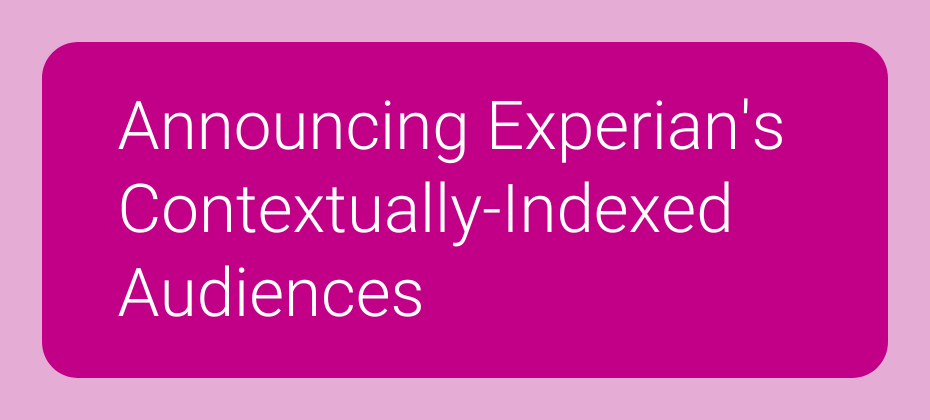
Ditch the cookie, not the data with the next evolution of contextual targeting Today, we're excited to announce Contextually-Indexed Audiences, a game-changer in contextual targeting. Experian’s new solution offers advertisers a powerful, privacy-safe solution that combines the precision of deterministic audience targeting with the flexibility of contextual targeting. Powered by real-time analysis from two million websites, access to 1,400 trusted audience segments, and easy activation through the top demand-side platform’s contextual marketplace or Audigent private marketplaces (PMPs), this solution offers advertisers a scalable way to reach their target consumers. With this solution, advertisers can reach consumers on websites that over-index for visitors with the demographics, behaviors, or interests, they are looking to target. For example, an automotive brand can select Experian’s “Contextually-indexed in-market for a luxury electric car” audience segment and reach consumers when they are browsing websites that often attract that exact segment. Best of all, this is done in a privacy-safe way since it’s not reliant on cookies, mobile ad IDs (MAIDs) or other user identifiers. How Contextually-Indexed Audiences work Contextually-Indexed Audiences harness advanced machine learning technology to move beyond traditional keyword-based strategies. The solution works in three steps: First, it analyzes traffic from over two million websites and mobile apps to identify the types of frequent visitors to those platforms. Next, using Experian’s Digital Graph, it resolves the identities of those visitors and maps them to more than 1,400 of Experian’s Syndicated Audiences, determining which audiences are most overrepresented on each site. Finally, the relevant audiences are assigned to those sites, allowing advertisers to deliver ads to people in those audiences while they are actively browsing the websites — without relying on user identifiers. Customer success story A leading auto manufacturer was among the first clients to activate this new solution while we were in beta. The goal was to identify new contextual targeting solutions that focus on privacy while maintaining scale and performance. The client identified two key target audiences: first-time vehicle buyers and experienced buyers. The initial campaigns using this new solution were highly successful. Even as the campaign scaled to twice the original volume, it continued to deliver three times the targeted click-through rate (CTR) goal. “Partnering with industry leaders like Experian, we're pushing the boundaries of contextual targeting with innovative data strategies that offer buyers greater flexibility and improved performance. These advanced contextual solutions are exciting as they not only drive results but also have the same privacy safeguards as traditional contextual targeting.”Matt Griffith, CTO & Co-Founder, Audigent Benefits of Contextually-Indexed Audiences Accurate consumer reach: Real-time integrations with over two million websites and apps coupled with machine-learning indexing technology ensure audience segments are constantly refreshed, which means advertisers reach consumers based on their latest habits. Privacy-safe audience targeting: These audiences are not reliant on cookies or any other user identifiers for targeting. Audience customization: Create the right audience segment for your campaign by using a combination of over 1,400 audiences across 12 data categories like demographics, politics, health, travel, finance, and TV. Flexible activation: Activate these audiences instantly in the top demand-side platform’s contextual marketplace or utilize our partnership with Audigent to create a custom private marketplace (PMP), where they can be activated across any media buying platform. When using a PMP, advertisers benefit from additional performance optimization capabilities. Experian’s Contextually-Indexed Audiences offer advertisers a powerful solution that combines the precision of audience targeting with the flexibility of contextual targeting. With real-time analysis of over two million sites and access to 1,400 trusted audience segments, advertisers can reach consumers based on their exact behaviors and interests. This is done in a privacy-safe, yet scalable way since it’s not reliant on cookies or other user identifiers. Whether activating instantly through the top demand-side platform or customizing through Audigent PMPs, this is the future of audience targeting. Ditch the cookie, not the data, and elevate your strategy today. See how these audiences can work for you Latest posts
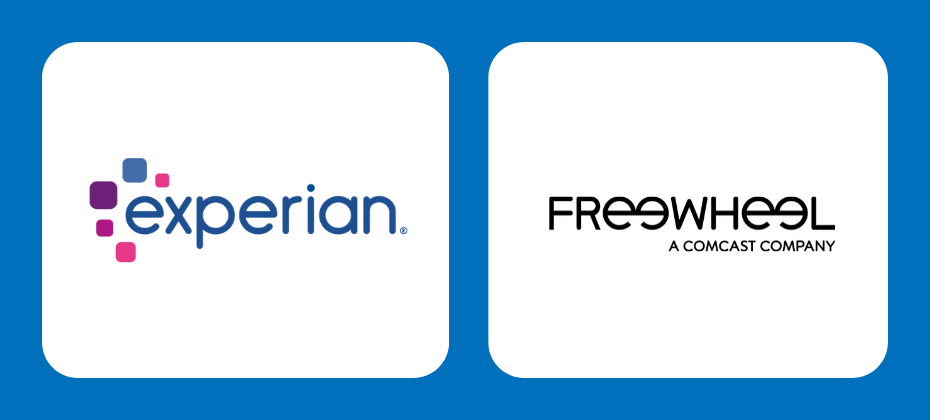
Experian is excited to announce that Experian Audiences are now accessible on FreeWheel, a global technology platform for the TV advertising industry. This includes FreeWheel’s leading sell-and-buy-side programmatic advertising platforms, which provide premium inventory for digital and TV campaigns. With Experian Audiences available within FreeWheel, advertisers can access the data they need to create and activate high-impact, targeted, and personalized campaigns across linear, digital, and advanced TV. Unlock unmatched audience precision With this integration, FreeWheel customers gain access to Experian's syndicated audiences powered by Experian Marketing Data. Experian offers 2,400 ready-to-use audiences across 15 data verticals, including demographic, lifestyle and interests, retail purchases, and auto. Backed by a deep understanding of people in the offline and digital worlds, Experian's data is ranked #1 in accuracy by Truthset, giving advertisers confidence that they are reaching the right people. “With the expansion of our collaboration with FreeWheel, we're enabling digital and television advertisers to access Experian Audiences with unprecedented ease. This integration equips brands with ready-to-use audiences, allowing them to build highly personalized campaigns that precisely reach the right consumers. This helps drive measurable impact and improves the effectiveness of brands' advertising strategies.”ali mack, vp of adtech, experian Publishers using Audience Manager, FreeWheel’s audience-enabled solution, can unify audiences across devices and ad types, including linear, through the FreeWheel Identity Network. Advertisers using Beeswax, FreeWheel’s demand-side platform (DSP), can target these audiences across multiple devices and platforms to ensure their campaigns resonate and deliver better results. Whether advertisers are targeting holiday shoppers or in-market car shoppers, Experian's data ensures campaigns are timely, relevant, and effective. Boost your campaigns with targeted audience solutions When it comes to capturing the interest of car buyers or connecting with valuable holiday shoppers, our collaboration provides audience targeting to ensure a marketer's message hits home when it counts. Capture TV viewers at the right moment. Developed in partnership with the Advertising Research Foundation (ARF), Experian's TV viewership audiences allow advertisers to reach households based on actual viewing habits, from how a household consumes TV to the brand of TV they own. Drive auto sales with in-market targeting. Reach in-market and near-market car buyers to support vehicle launches and end-of-year promotions, ensuring advertisers’ messages hit consumers actively looking for a vehicle. Maximize retail success during the holiday. The holiday shopping season presents an ideal opportunity to capture attention, drive sales, and build lasting customer relationships. Experian can help you capitalize on the holiday season with precisely targeted audiences, including shopping styles, discount-seekers, gift-givers, and holiday travelers. Transform your campaigns with Experian Audiences With Experian Audiences available in FreeWheel’s platforms, advertisers can access the data they need to create high-impact campaigns across TV and digital platforms. Whether your goal is to drive sales during the holiday season or reach in-market car shoppers, Experian's trusted data ensures you'll reach the right audience at the right time with the right message. For a full list of Experian’s syndicated audiences and activation destinations, download our syndicated audiences guide. Download now Latest posts

With U.S. brands expected to invest over $28 billion in connected TV (CTV) in 2024, balancing linear TV and CTV is now a top priority. Advertisers need to integrate these platforms as the TV landscape evolves to reach audiences with various viewing habits. A successful strategy requires both linear and CTV approaches to effectively reach audiences at scale. We interviewed experts from Comcast Advertising, Disney, Fox, Samsung Ads, Snowflake, and others to gain insights on the evolving landscape of linear and CTV. In our video, they discuss audience fragmentation, data-driven targeting, measurement challenges, and more. Watch now to hear their perspectives. Five considerations for connecting with linear TV and CTV audiences 1. Adapt to audience fragmentation With consumers' rapid shift toward streaming, it's easy to overlook the enduring significance of linear TV, which still commands a large portion of viewership. According to Jamie Power of the Walt Disney Company, roughly half of the current ad supply remains linear, highlighting the need for brands to adapt their strategies to target traditional TV viewers and cord-cutters. As streaming continues to rise, ensuring your strategy integrates both CTV and linear TV is crucial for reaching the full spectrum of audiences. "I don't think that we thought the world would shift so quickly to streaming, but it's not always just all about streaming; there's still such a massive audience in linear."jamie power, disney 2. Combine linear TV’s reach with CTV’s precision Blending the reach of linear TV with the granular targeting capabilities of CTV allows advertisers to engage both broad and niche audiences. Data is critical in understanding audience behavior across these platforms, enabling brands to create highly relevant campaigns tailored to specific audience segments. This strategic use of data enhances engagement and ensures that the right viewers see advertising campaigns. "The future of TV is really around managing the fragmentation of audiences and making sure that you can reach those audiences addressably wherever they're watching TV."carmela fournier, comcast Advertising 3. Manage frequency across platforms Cross-platform campaigns require managing ad frequency to avoid oversaturation while ensuring adequate exposure. With a variety of offline and digital IDs resolved to consumers, our Digital and Offline Graphs can help maintain consistent messaging across linear TV and CTV. This approach allows advertisers to strike the right balance, preventing ad fatigue and delivering the right audience reach for campaign impact. "You've got to make sure that you're not reaching the same homes too many times, that you're reaching everybody the right amount of times."justin rosen, ampersand 4. Focus on consistent measurement Linear TV and CTV offer different data granularities, necessitating tailored approaches for accurate cross-platform campaign measurement. Bridging these data gaps requires advanced tools that streamline reporting for both mediums. As the industry moves toward consistent measurement standards, advertisers must adopt solutions that provide a comprehensive view of campaign performance, enabling them to optimize their cross-platform efforts. "Where I think there are pitfalls are with the measurement piece, it's highly fragmented, there's more work to be done, we're not necessarily unified in terms of a consistent approach to measurement."april weeks, basis 5. Align with shifts in audience behavior The success of cross-platform campaigns hinges on staying agile and responsive to shifting audience preferences. As CTV adoption grows, advertisers must proactively adjust their strategies to align with how viewers engage across linear and streaming platforms. Ideas include: Regularly updating creative Adjusting the media mix Utilizing real-time data insights to ensure campaigns remain relevant "At Fox we were a traditional linear company, and essentially what we're trying to do is merge the reach and the scale of TV as well as the reach and the scale of all the cord-cutters and cord-nevers that Tubi possesses." Darren Sherriff - Foxdarren sherriff, fox As streaming TV rapidly changes, brands must stay ahead of trends and shifts in consumer behavior to tap into CTV's growing potential. By focusing on these opportunities, advertisers can blend linear TV and CTV, ensuring their campaigns reach audiences wherever they watch. Connect with Experian's TV experts As a trusted leader in data and identity services, Experian offers the expertise to help you succeed in television marketing. With our strong partnerships with key players in the TV industry, we provide access to unique marketing opportunities. Learn how Experian’s data and identity solutions can deliver outstanding results in advanced TV advertising. Partner with us today to enhance your marketing strategies using our Consumer View and Consumer Sync solutions. Connect with our TV experts Latest posts
